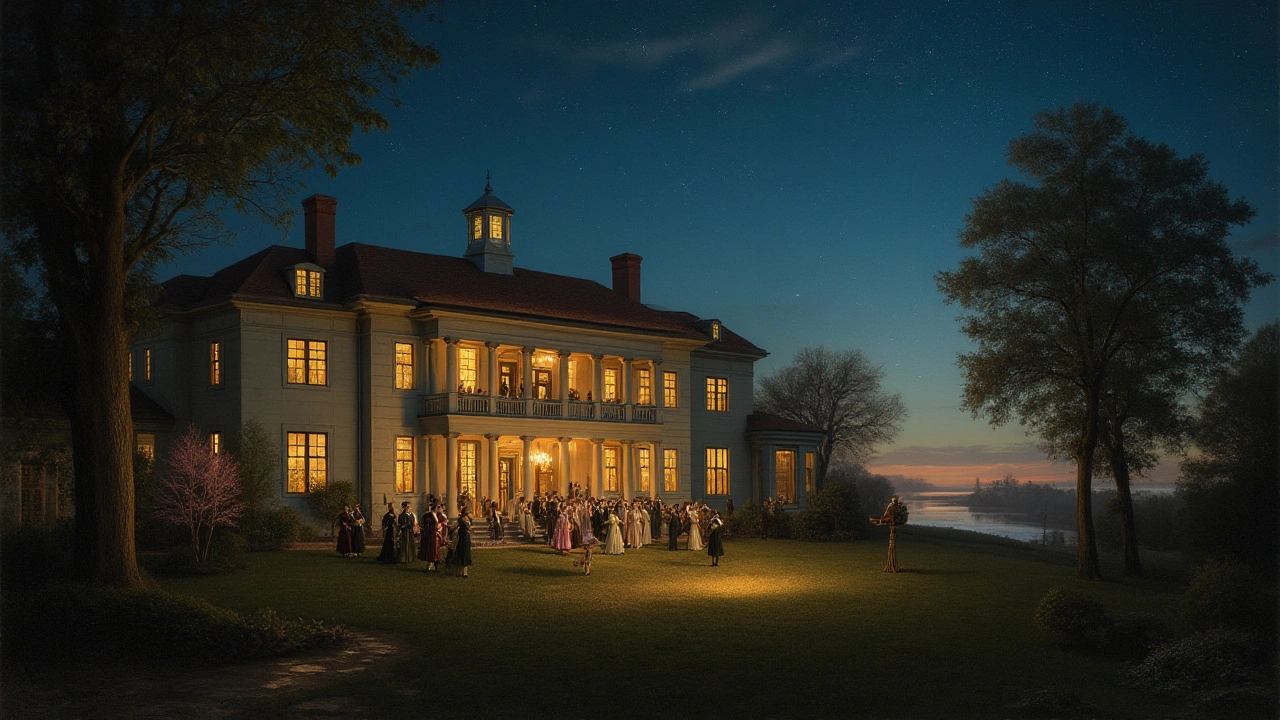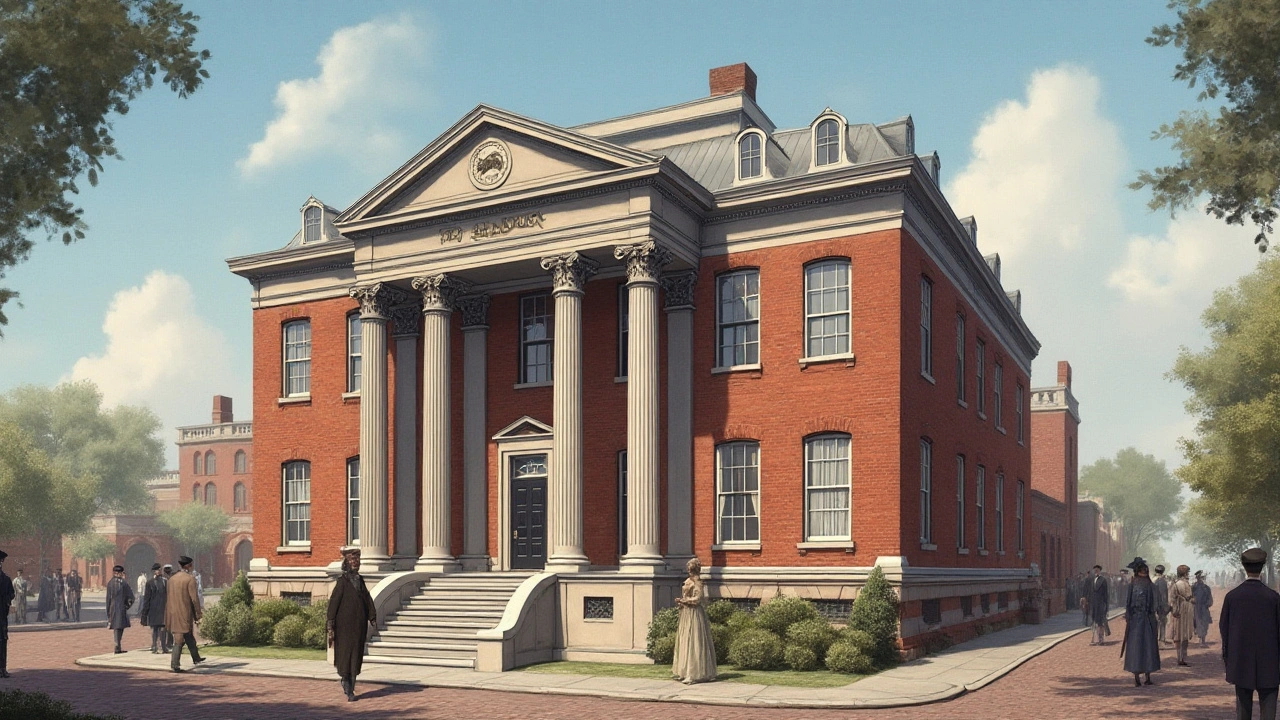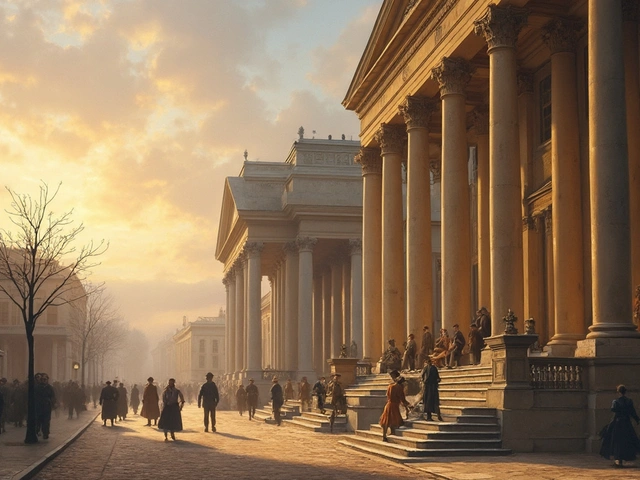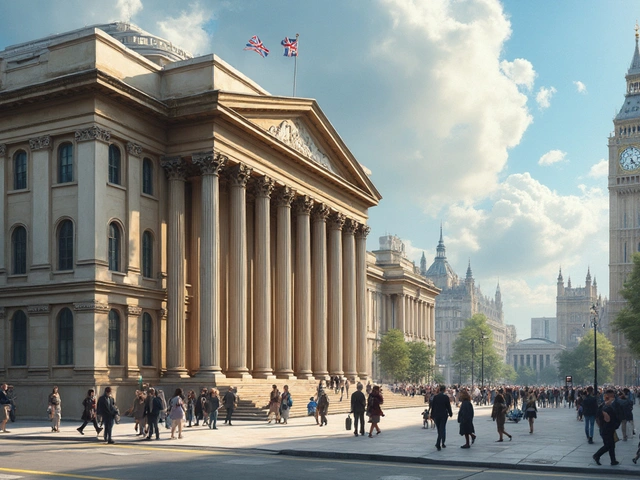Federal architecture, with its roots deeply planted in the late 18th century, offers a fascinating glimpse into the burgeoning identity of a young nation. As the United States emerged from the shadows of colonial rule, its architects sought inspiration from classical ideals, translating them into structures that symbolized the democratic values and aspirations of their time.
The style is characterized by its elegant simplicity, drawing on the symmetry and proportions of Greek and Roman designs. Buildings crafted in this style often include features like tall columns, large windows, and intricate decorative elements, reflecting a sense of balance and order.
Beyond its visual appeal, Federal architecture tells a compelling story of cultural exchange and adaptation. It mirrors the hopes and ambitions of a nation striving to position itself on the global stage. Today, these structures not only serve as reminders of America's past but also as steadfast icons that inspire future generations to appreciate and preserve their architectural heritage.
- Origins of Federal Architecture
- Distinctive Features
- Impact on American Culture
- Preservation and Modern Influence
Origins of Federal Architecture
The birth of Federal architecture is intricately linked to the formative years of the United States, a nation eager to forge its own identity following independence. This architectural style began to gain ground in the late 1700s, embodying the philosophical ideals of the Enlightenment. Inspired by the classical world of ancient Rome and Greece, it sought to reflect the democratic ideals that were intrinsic to the creation of the new republic. As America's founding fathers drafted the Constitution, architects were delving into the rich symbolism and balance found in classical architecture, hoping to convey a sense of permanence, order, and rationality.
The rise of Federal architecture coincided with a period of societal transformation. This era saw a shift from colonial dependence to a self-assured nationhood, encapsulating a desire for progress and enlightenment. Influential architects such as Charles Bulfinch and Benjamin Latrobe played instrumental roles in this transformation. They traveled abroad, particularly to Europe, absorbing the grandeur of its classical past and returning with fresh inspiration to apply to American soil. Bulfinch, for instance, became renowned for his work on the Massachusetts State House, a shining example of Federal design with its distinctive neoclassical elements.
"Architecture should speak of its time and place, but yearn for timelessness." - Frank Gehry
At the heart of this design philosophy was not just an appreciation of classical aesthetics but a deeper connection to the ideas they represented. The columns and pediments, reminiscent of Roman temples, exuded authority and virtue, both critical to the soaring aspirations of a burgeoning nation. Yet, the beauty of Federal architecture lay not just in its grandeur but in its accessibility. Homes, public buildings, and even government structures adopted this style, promoting a unified architectural language that reflected shared values.
As Federal architecture evolved, it became apparent that its significance surpassed mere bricks and mortar. It emerged as a cultural reflector, mirroring both the ambition and humility of early American society. Despite the occasional incorporation of more decorative motifs often gleaned from European designs, the core of Federal architecture remained steadfastly American at its heart. It's this uniquely American interpretation of elegance and restrained opulence that continues to draw admiration and inspire contemporary architects and historians alike.

Distinctive Features
When we delve into the charm of federal architecture, one of the first things to captivate us is its stylish simplicity and elegant restraint. This architectural style, born from a desire to express the newfound independence and aspirations of the United States, channels the grandeur of classical architecture in a distinctly American way. Buildings of this period often feature symmetrical facades, which are balanced and harmonious, leading the eye naturally along clean, horizontal lines. The precision of these elements conveys a sense of order and logic, mirroring the Enlightenment ideals that were so influential at the time.
The presence of tall, slender columns is another hallmark of this style, evoking images of ancient Greek temples. These columns often starkly line the entrance or wrap around porches, offering a touch of stately grace to residences and public buildings alike. Window arrangements in federal architecture are meticulously planned, often using large sash windows that might count as the era's most illuminating feature, both literally and figuratively. These allow ample natural light to bathe the interiors, creating warm and inviting spaces.
Thomas Jefferson once remarked, "Architecture is the most durable of the arts; it can embody and reflect the aspirations of a nation across generations."Another distinctive element is the intricate decoration that adorns many federal buildings. Despite the overall simplicity of the style, the repeated use of decorative motifs like swags, garlands, and urn ornamentations are prevalent. Often crafted in relief from plaster or carved directly into wood, these embellishments add a touch of sophistication. The interiors also offer an extension of the aesthetic, boasting ceiling medallions, elegant cornices, and finely detailed moldings.
Federal architecture also witnesses the use of fanlights and sidelight windows flanking doorways, presenting an impressive entry point to many homes and institutions. This not only adds visual intrigue but also denotes a shift towards a welcoming atmosphere, blending form and function beautifully. In essence, federal architecture is a powerful testament to the state's growing confidence and emerging national identity during the early years of American history.
Materials and Construction
The materials used in federal architecture further enrich its narrative. Brick and wood are prevalent, chosen for their accessibility and practicality. Builders of that time were adept at using the available resources to craft structures that were not only aesthetically pleasing but also enduring. Stone is sometimes employed, lending a touch of permanence and strength. You might find interesting the use of ironwork for decorative purposes, showcasing the era's innovative spirit. Craftsmanship in joinery and carpentry offered a reflection of the refined skills that artisans possessed, which were critical to achieving the style's clean lines and detailed finishes.
Impact on American Culture
The aesthetic charm of federal architecture reaches beyond its visual appeal, serving as a mirror reflecting the broader cultural evolution of the United States. As the new nation began to assert its identity in the late 18th and early 19th centuries, architecture became a canvas for expressing emerging American values. It’s fascinating to consider how the architectural choices of that period reveal so much about the aspirations of the day. Buildings constructed in the Federal style not only embodied an aesthetic admiration for classical Greece and Rome but also represented democratic ideals in their structure and form. This architectural language spoke to the desire for unity, order, and rationality during a transformative period in history.
From the halls of government in Washington, D.C. to modest homes in the burgeoning towns of the New Republic, the influence of Federal architecture extended into everyday American life. These structures implemented a design that was accessible, yet grand, a reminder of the possibilities within reach for even ordinary citizens. Their dimensions and layouts often balanced public functionality with private domesticity, presenting an allegory of the United States' promise of personal liberty within a structured society. The style’s clean lines and graceful symmetry appealed not just to the upper classes but also resonated with middle-class Americans who yearned for sophistication.
The cultural impact of federal architecture also extended internationally, as foreign observers noted the burgeoning architectural style of this new democratic power. In fact, America's young architects were often sent abroad to study and bring back ideas, which they then adapted to fit the unique political and cultural fabric of their homeland. This exchange didn’t merely flow one way; it invited others to see America as a nation capable of contributing to the global architectural arena. The lasting legacy of the period can be seen in the way it influenced later architectural styles that continued to echo the balance between accessibility and grandeur.
In modern times, the preservation of Federal-style buildings has become an important cultural endeavor. Many structures today act as museums, opening their doors to the public, inviting people to reflect on the burgeoning values and cultural shifts from centuries past. Visiting these sites is akin to stepping back in time, where the storied past of American culture is told through bricks and mortar. The ongoing dialogue around preservation and restoration speaks to a broader appreciation of early American ingenuity and aspirations expressed through these iconic structures. Today, organizations dedicated to preserving America's architectural heritage often emphasize the importance of the Federal style, ensuring it continues to inspire future generations.
Interestingly, the influence of federal architecture remains evident in contemporary design practices. Architects often draw inspiration from this classical tradition, infusing new projects with a sense of historical continuity. This engagement ensures that the cultural legacy continues to thrive, linking past ideals to present-day realities. Whether through a consciously replicated facade or subtle nods to symmetry and form, the spirit of Federal architecture can often be felt in contemporary spaces, reminding us of the enduring impact of this distinctive style on the fabric of American culture.

Preservation and Modern Influence
Preserving Federal architecture is not just about safeguarding aging bricks and old timbers; it is about keeping a vital piece of the American narrative alive for future generations. These architectural gems, sprinkled throughout the country, are living museums that tell tales of a time when the United States was defining its identity. In cities like Boston and Philadelphia, where this style first flourished, preservation societies work tirelessly to maintain these historic structures. They face the challenge of modern erosion and urban development but their efforts ensure that these buildings remain a testament to American ingenuity and aesthetic aspiration.
Interestingly, the impact on American culture is evident in how modern architects draw inspiration from these classic forms. The clean lines and balanced proportions of Federal architecture have found new life in contemporary designs that aim for a blend of tradition and modernity. You'll see homes and buildings whose facades echo these historical influences, normalized in the fabric of today’s diverse architectural landscape. This dialogue between the old and the new supports the conversation on how historical design can inform current practices. The importance of keeping this architectural language alive has been echoed by many renowned architects.
“Preservation should not be about freezing buildings in time,” says Lawrence Cheek, a respected architecture critic. “It is about embracing their role in a dynamic cultural exchange where the past informs our present.”
The influence of Federal architecture extends into the educational domain too, where students of architecture study these historic forms to gain a deeper understanding of structural aesthetics and functional design. Such curricula encourage a respectful appreciation of past architectural achievements while prompting students to envision how these principles can be adapted for more sustainable and innovative solutions in today's world. Preservation here becomes not only an act of conserving the past but also a blueprint for futuristic endeavors.
Surveys indicate that over 60% of Americans support government funding for the preservation of such historic landmarks. These statistics show a national consensus on the importance of these edifices not just as tourist attractions, but as cultural benchmarks. Efforts like the National Register of Historic Places play a crucial role in identifying and protecting these sites. They provide crucial funding and technical guidance to communities embarking on preservation journeys, ensuring history does not vanish amidst modern skylines.





